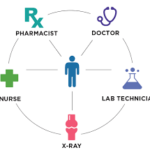Understanding Non-Profit Health Insurance
Here are some of the choices to be made when developing a health insurance program. Will you offer  lower priced insurance or access to costly experimental tests and prescriptions? Will you pay for a patient to have more time with his or her physician, or easier access to urgent or community clinics that are staffed with nurse practitioners? Can less costly health insurance be combined with greater patient satisfaction and better outcomes of the treatment of an illness or accident?
lower priced insurance or access to costly experimental tests and prescriptions? Will you pay for a patient to have more time with his or her physician, or easier access to urgent or community clinics that are staffed with nurse practitioners? Can less costly health insurance be combined with greater patient satisfaction and better outcomes of the treatment of an illness or accident?
Amazon, JP Morgan Chase and Berkshire Hathaway announced that they are joining forces to provide satisfactory health care and control costs. Together, these companies have about 900,000 employees. They are developing a non-profit health insurance company to serve them.
These companies may reduce executive costs by coordinating administration. They will not distribute profits to shareholders. They may curb the use of tests and of overpriced medications. They may even use their bargaining power to reduce the cost of prescription drugs.
 Today, some universities and colleges work together to offer non-profit medical insurance to students and teachers. Additionally Kaiser Permanente, a non-profit company with nearly 12 million members. Kaiser was developed after WWII and the passage of the New Deal. Today in addition to insurance, Kaiser Permanente operates pharmacies and non-profit hospital services and has built a team with a number of physicians.
Today, some universities and colleges work together to offer non-profit medical insurance to students and teachers. Additionally Kaiser Permanente, a non-profit company with nearly 12 million members. Kaiser was developed after WWII and the passage of the New Deal. Today in addition to insurance, Kaiser Permanente operates pharmacies and non-profit hospital services and has built a team with a number of physicians.
According to a physician who works Kaiser, its pharmacies have exceptional bargaining leverage with drug makers and can dramatically reduce the cost of prescriptions. Physicians stay abreast of credible research and prescribe medicines only when their effectiveness is well established. Also, physicians are careful to order tests and provide treatments that significantly improve the problems faced by the patient.
I recently spoke with some friends who have been or are now Kaiser patients. Many are very pleased with the lower cost of their insurance, the convenience of the services provided at Kaiser medical centers, and the more restricted orders for drugs, tests and treatments. But other friends have expected more. They want to take advantage of more chances to improve their health or the health of loved ones. They feel that their health care is being compromised when access to tests, treatments and experimental drugs is limited. There’s a choice to be made here. Hopefully non-profit insurers will lower the cost of insurance so those with lower incomes can afford it for themselves and for their children.

